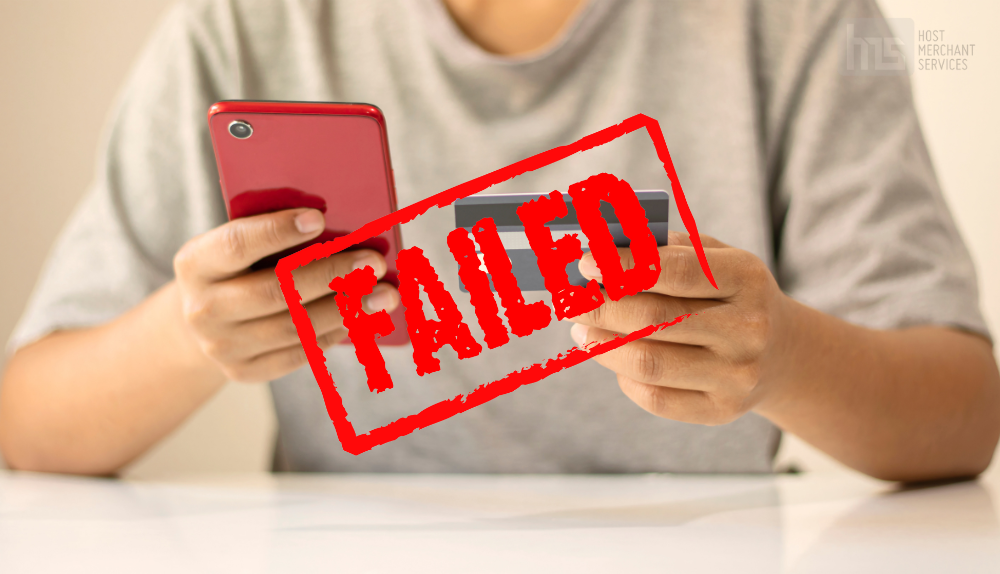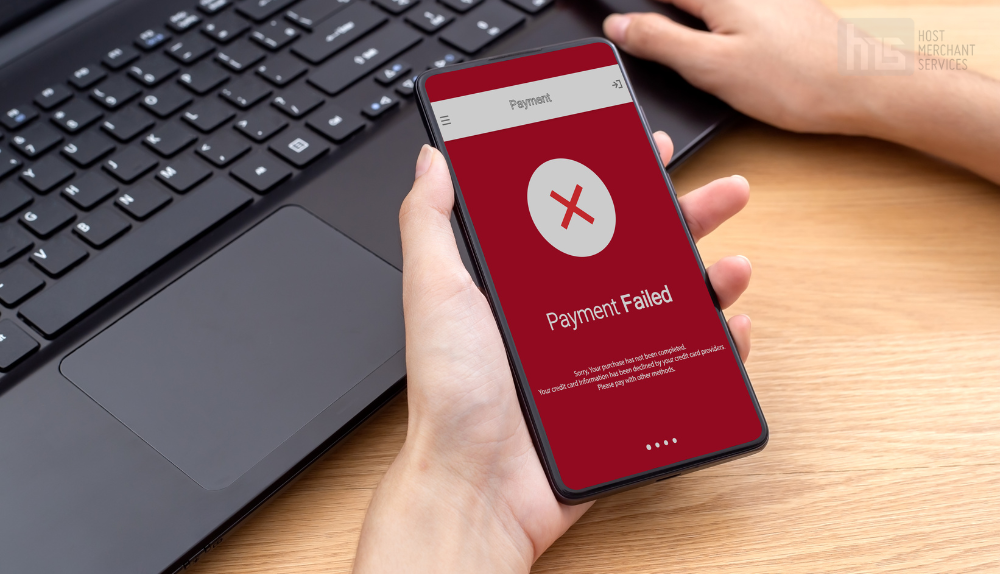
By max July 2, 2023
Nothing is more frustrating for a customer than failed payments. Suppose you have added your favorite products to the cart and are heading to the checkout page only to receive the error that says “Transaction failed, please try again” or a similar message. The error code is necessary in cases where the transaction looks suspicious and processing it carries a significant risk for the merchant and cardholder. Such transactions are declined.
But what about authentic transactions? What if the cardholder trying to process a payment receives an error code for unexplained reasons? Well, that can be a frustrating experience for your customers and might result in the customer abandoning their carts and switching to a competitor’s website for completing their shopping. In this post, we will walk you through the common reasons for failed payments and how you can avoid them. Let’s get started.
Causes of Failed Payments

To understand the causes of failed payments, you need to first understand the process of online transactions. The customer initiates a transaction on an online store. Their transaction is verified by the payment gateway and is sent to the payment processor for further evaluation and processing. From here, the acquiring bank submits the transaction request to the customer’s issuing bank, which approves or declines the transaction based on the customer’s bank balance.
The process takes place within seconds. Once the transaction has been sent for processing, the customer receives an OTP on their rle number for verification. After that’s done, they will get a message of “transaction approved” or “failed” on their screens. Likewise, merchants are also notified about the transaction failure. Now, the question is, in what conditions does the issuing bank fail a transaction?
- Expired Card Details: If the credit card used on the eCommerce website has expired, the customer will receive an error code when processing a payment. There’s nothing a merchant can do in this case. Customers must check their credit card’s expiration date regularly to ensure that their cards are still valid and the information they have entered is accurate.
- Not Enough Funds: Another common reason why transactions are declined is insufficient funds in your bank account. If the customer doesn’t have enough money to complete the transaction or they have exceeded their card limit for the month, the issuing bank will decline their transactions.
- Inaccurate Details: Payments can also fail if you enter incorrect card details. This is pretty common for customers that manually type in the long card numbers, expiry dates, security codes, names, and other details on every purchase. It’s advisable for customers to save this information for future transactions to avoid the “payment declined” error.
- Misconfigured Gateway: When the card payment is declined, it’s not always due to an error from the customer’s end. If the card details are correct, there are sufficient funds in your bank account, and your card has not expired, there must be a fault from the merchant’s end. For example, an error can occur if the payment gateway is misconfigured.
- Fraud Transactions: If the issuing bank or the card network detects fraudulent transactions, they might decline the payment. This commonly happens at stores that have implemented advanced security technology, like an address verification system, where each cardholder is asked to enter their address to process the transaction. This ensures that even if the card is stolen, the fraudster won’t bypass the address verification process, resulting in a failed transaction.
- Server Downtime: For a customer, an online transaction takes place within seconds. But, the process going on at the backend is pretty complex and time-consuming. There are many parties involved in every transaction. This includes a payment gateway, payment processor, acquiring bank, card network, and issuing bank. If the server of any of these processing units fails, the transaction won’t complete.
- The Customer Can’t Validate the Transaction: Usually, payment providers have implemented multiple security layers to prevent fraudsters from using unauthorized or stolen credit cards. To ensure the card you have used is yours, the payment processor will conduct a two-step verification where they send a one-time password to your registered mobile number or email. This is for card verification. You need to enter the code to verify your identity. Typing the code incorrectly or failing to verify your identity within the given timeframe can lead to transaction failure.
- Security Threat: A bank can decline a transaction for many reasons. For example, if the customers’ spending limit has exceeded the minimum spending threshold, or it’s a sizable transaction that looks suspicious, the bank or the payment gateway might decline it immediately. From a security perspective, this is the correct way to address transactions. However, some authentic transactions are blocked for no reason, leading to poor customer experience.
Failed Payments for Recurring Transactions
The rates of unsuccessful transactions are higher for recurring payments. That’s mainly because people buy a subscription-based service using autopay, where the amount equivalent to their subscription plan is deducted automatically from their accounts every month or annually. The payment fails because the credit card used in such types of transactions can expire at some point, increasing the chances of failed transactions. Or, the customer might not have sufficient balance in their bank.
What Happens When the Payment Fails?

Payment failure can have negative consequences on your eCommerce store. Below are a few things that might happen if your customers come across the error code for failed transactions repeatedly.
Customer Churn
There’s an increased risk of customer churn for businesses that fail to meet customers’ expectations in terms of product quality or the overall buying journey. Failed transactions are one of the many things that can increase customer churn. Not only do they abandon the cart, but repeated failed transactions will make them terminate their account with your company and stop working with you.
Decreased Revenue
If your server experiences downtime even for a short while, imagine the number of customers you will lose during this period. Customers will not want to go to their issuing bank or check the technical fault manually. They will rather leave your website and buy from your competitors who accept their credit cards.
Poor Business Reputation
Failed payment poses a significant threat to your business’s reputation, as customers believe a website that can’t process their transactions cannot offer a good customer experience. Since payment approval and rejection has a direct impact on your customer’s shopping journey, a failed payment can lead to poor customer experience, which in turn, affects your business reputation.
How to Avoid Payment Failure?
Although payment failure mainly happens because of a mistake on the customer’s end, like incorrect card information or an expired card, a payment failure can occur due to the payment service provider. You can take a few steps to avoid payment failure. These tips can help.
Use Multiple Payment Processors
If you have a single acquiring bank, their server downtime or any technical issue with their service will mean your customers can’t process the transactions until the processor has fixed the issue. The risk of system downtimes is higher when your payment gateway routes the transaction to only one processor.
That also makes processing international transactions quite challenging and expensive. Having multiple payment processors can help you ensure that your customers’ transactions will be rerouted to another processor if one payment service provider is unavailable. Likewise, the system will automatically detect the cost-effective and nearest payment processor to ensure the lowest fees on each transaction and smooth processing.
Use the Right eCommerce Platform
Merchants consider many factors when deciding on a suitable eCommerce platform. One such factor is the payment ecosystem. You can either integrate a third-party payment gateway into the system or use the built-in payment infrastructure. If the eCommerce system has in-house payment processing capabilities, you can use that to ensure speedy and reliable payment processing. If not, you can work with third-party payment solutions. If you choose the latter, make sure the eCommerce platform accepts multiple payment gateways.
Allow Multiple Payment Options
Let your customers choose from a broad range of payment methods. This allows them to switch to a different payment option if their credit/debit cards do not work and the payment keeps declining. They must be able to use digital wallets, like ApplePay and PayPal, to process transactions quickly. Having multiple payment options won’t just give your customers a choice if their payment declines, but it’s quite convenient for them to choose a payment method they prefer.
Bottom Line
Failed payments affect your bottom line and customers’ buying experience at your store. One might think there’s nothing much you can do about failed transactions, but you need to take the right measures if it’s an error from your end. Choosing an appropriate payment service provider and partnering with multiple payment processors are a few ways to avoid failed transactions. Likewise, you must incorporate different payment methods into your payment ecosystem to provide your customers with options if their preferred payment method fails.
